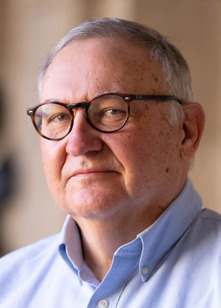The old joke around the State Capitol is that legislators get paid “$12,000 a year and all you can eat and drink.”
That is a reference to all the free meals – and, OK, maybe a drink or two – dispensed at the almost daily events hosted by lobbying groups during legislative sessions.
But in reality, it’s no laughing matter that state senators in Nebraska get paid so little for representing us.
George Norris, the founder of the one-house Unicameral Legislature in our state, argued that such a system would save the state money. To be sure, reducing the number of state lawmakers in Nebraska from the 133 in the state’s two houses (Senate and House of Representatives) to the 43 originally in the one-house Unicameral saved money.
But Norris felt the members of the new Unicameral should be paid well. He advocated for a $2,400 yearly salary back in 1934 for state senators.
Today, if you considered inflation, that pay would be nearly $58,000, according to Civic Nebraska.
As they say down on the farm (and in urban backyards), that ain’t chicken feed.
But chicken feed is what state legislators (now up to 49) get today. They are paid $12,000-a-year, a salary that hasn’t changed in 37 years.
OK, I hear ya, those gol-darned politicians shouldn’t get paid more. They always seem to fall short when cutting property taxes? They should know what the job pays when they run.
But when it comes to finding people willing to run for an office that pays squat, well, it sort of narrows the field. Mostly retirees, the semi-retired and the independently wealthy who don’t need a paycheck can afford to run.
Remember State Sen. Amanda McGill when she was in office? She worked a parttime job at Target to make ends meet, allowing her to represent her Millard-area district.
“Nebraska makes it very difficult for people working normal jobs to be able to represent their communities as a state senator,” said State Sen. Ben Hansen of Blair.
Efforts to get Nebraska voters (who must approve any pay raise) to increase legislative salaries have failed over the years. Politicians aren’t popular folks these days, and the repeated “no” votes on pay raises tends to bear that out.
But now state lawmakers appear to be embracing a new strategy, one that would create an independent committee to determine what is fair pay for state senators.
At least 22 states, including neighboring Kansas and Missouri, have such commissions.
These panels have no members who are current or former state senators, spouses of legislators, or even lobbyists or past/present workers for the Legislature, thus removing the common (and justifiable) gripe that politicians are giving themselves a raise. This would allow an independent committee to decide what’s fair.
One suggestion was $30,000 a year.
Recall the howls that echoed across Omaha a few years back when county commissioners there voted themselves a 4% annual raise. Douglas County commissioners now get about $60,000 a year.
So I hear you say that “state legislators are part time, right? So they don’t warrant full-time pay.”
It’s my experience, however, that most state senators work full-time hours and more during sessions, and close to it when out of session.
This isn’t easy work – issues like state aid to schools, social services and tax policy are complicated, and require lots of research and consideration. One study suggested that Nebraska lawmakers work an average of about 30 hours a week overall.
The proposal in the Legislature would put the issue of an independent legislative pay commission before voters in 2026.
It’s pretty clear that you get what you pay for in this world. Maybe it’s time to consider that when it comes to paying state senators.
Paul Hammel has covered state government and the state for decades. He retired in April as senior contributor with the Nebraska Examiner.

.jpg)








